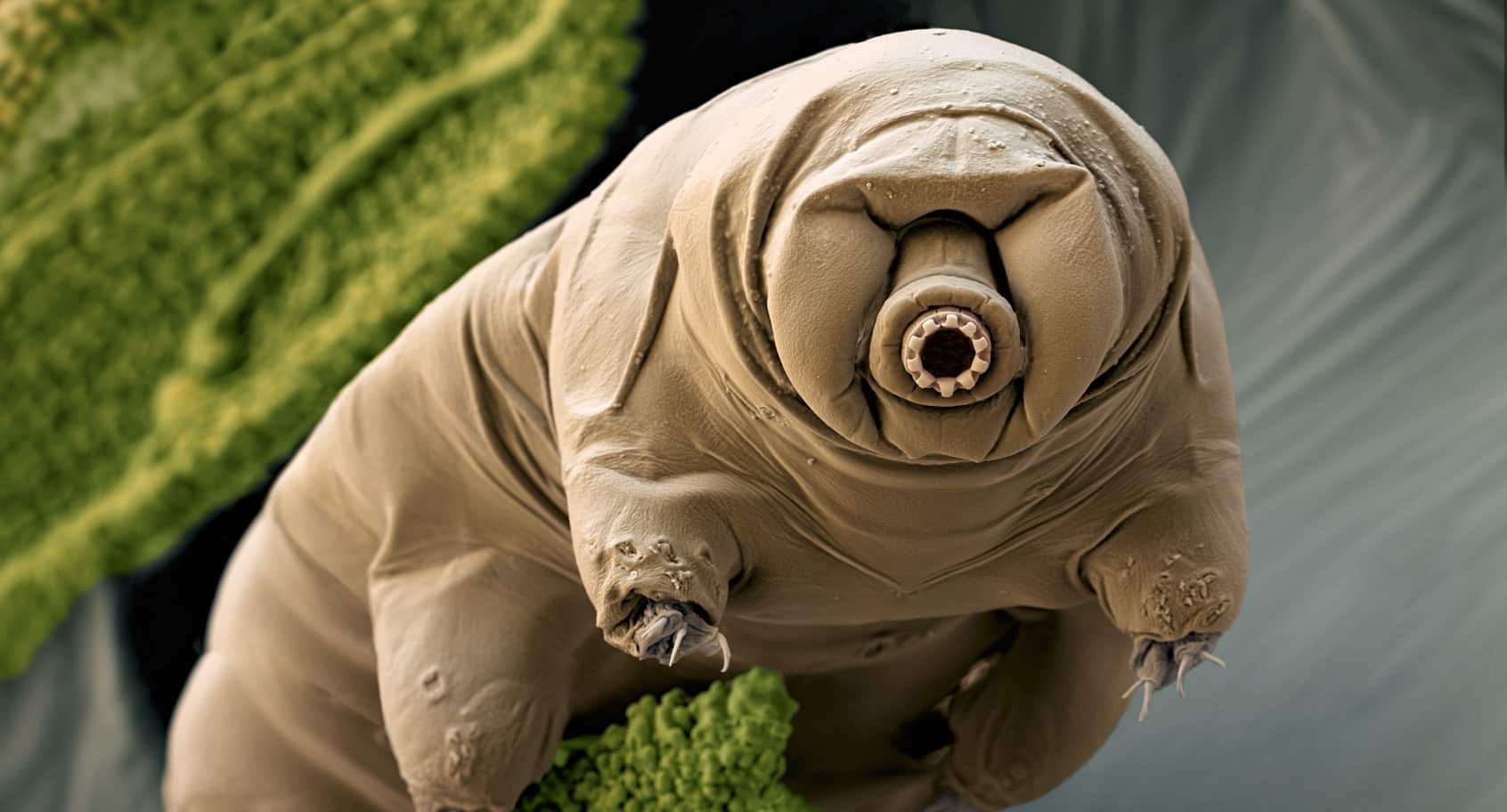Water bear don’t care. Nope, these tough guys don’t give a damn.
An apocalypse would probably top your (if you are half as crazy as I am) unsettlingly long list of all the things capable of wiping out mankind. And when the doomsday event does happen, scientists think the indestructible extremophiles- Tardigrades, might be able to outlive us all.
These microscopic creatures also known as “water bears” have now been found to have the resiliency to keep going on about their day, probably a little annoyed with the developments, even in case of a cosmic cataclysm.
A collaborative study between researchers at Oxford and Harvard found tardigrade “will survive the risk of extinction from all astrophysical catastrophes, and be around for at least 10 billion years – far longer than the human race.”
These mighty, eight-legged guys seem to be every bit invincible- they are capable of living without food or water for up to 30 years and can even endure temperatures as high as 300 degrees Fahrenheit as well as survive the frozen vacuum of space.
Furthermore, in 2014, Japanese researchers thawed a group of tardigrades that had been frozen for 30 years. What did they do after they woke up? They reproduced.
And
get this- all that hardiness is packed into a microscopic creature that can only grow up to 0.5 millimeter!Long story short.
These guys are simply awesome, stick them in any situation, they perk right back up and go on their merry way. Their strength and power is so obscenely superb that the scientists are convinced they contain an unprecedented ratio of DNA that’s “stolen” from other organisms by way of horizontal gene transfer, enabling them to survive forever- even after all species on earth as we know it, gone.
Courtesy of scientists at Oxford University, we all now know these oddly cute microscopic animals could be the Earth’s sole survivors in case of an astrophysical catastrophe.
But this article is still missing the point, no?
The new paper published in Nature’s Scientific Reports journal was not exactly focussed on these guys, but instead, was a thought experiment.
“Much attention has been given in the literature to the effects of astrophysical events on human and land-based life,” the authors, physicists from Oxford and Harvard, write. “However, little has been discussed on the resilience of life itself.”
An asteroid impact killed 80% of the inhabitants on earth 66 million years ago, and we all know another one is due. So the question is- if a mass extinction event were to occur, it would be nice to know if life could again grow, evolve, and prosper.
The scientists think these moss piglets make the cut.
In case you were wondering how they could be so sure, scientists are not simple bud.
They subjected tardigrades to three potential life-destroying calamities that could hit the Earth: an asteroid impact, supernova, and gamma-ray bursts.
They calculated the risks posed to tardigrades’ marine habitats by asteroids and concluded that nothing big enough to totally boil up our oceans should ever intersect with Earth’s orbit.
For a supernova to be deadly to tardigrades, it would have to be at a distance of 0.14 light-years away, which is much closer than the closest stars to our solar system, Proxima Centauri. And fortunately, the Earth is in a comfortable position where the nearest potential supernova is three magnitudes farther than the estimated distance for sterilization. Therefore, it is very unlikely for a supernova to wipe out all life on Earth in the sun’s lifetime.
Gamma-Ray bursts, if close enough, are disastrous to humans and other land-based animals due to the eradication of the ozone layer, thereby leaving us exposed to extreme radiation. However, even a complete loss of atmosphere would likely not affect these species, as some tardigrades can form bubbly cysts around their bodies- like puffer jackets; the cysts allow them to survive in harsh climates.
“Tardigrades are as close to indestructible as it gets on Earth, but it is possible that there are other resilient species examples elsewhere in the universe. In this context there is a real case for looking for life on Mars and in other areas of the solar system in general. If Tardigrades are Earth’s most resilient species, who knows what else is out there,” says Dr. Rafael Alves Batista, co-author of a paper.
“The history of Mars indicates that it once had an atmosphere that could have supported life, albeit under extreme conditions,” Abraham Loeb, study co-author and chair of the astronomy department at Harvard University, said. “Organisms with similar tolerances to radiation and temperature as tardigrades could survive long-term below the surface in these conditions. The discovery of extremophiles in such locations would be a significant step forward in bracketing the range of conditions for life to exist on planets around other stars.”
So, yeah, while humanity will be toast even if average temperatures rise just a few more degrees, water bears will be just fine. Whatever.
































